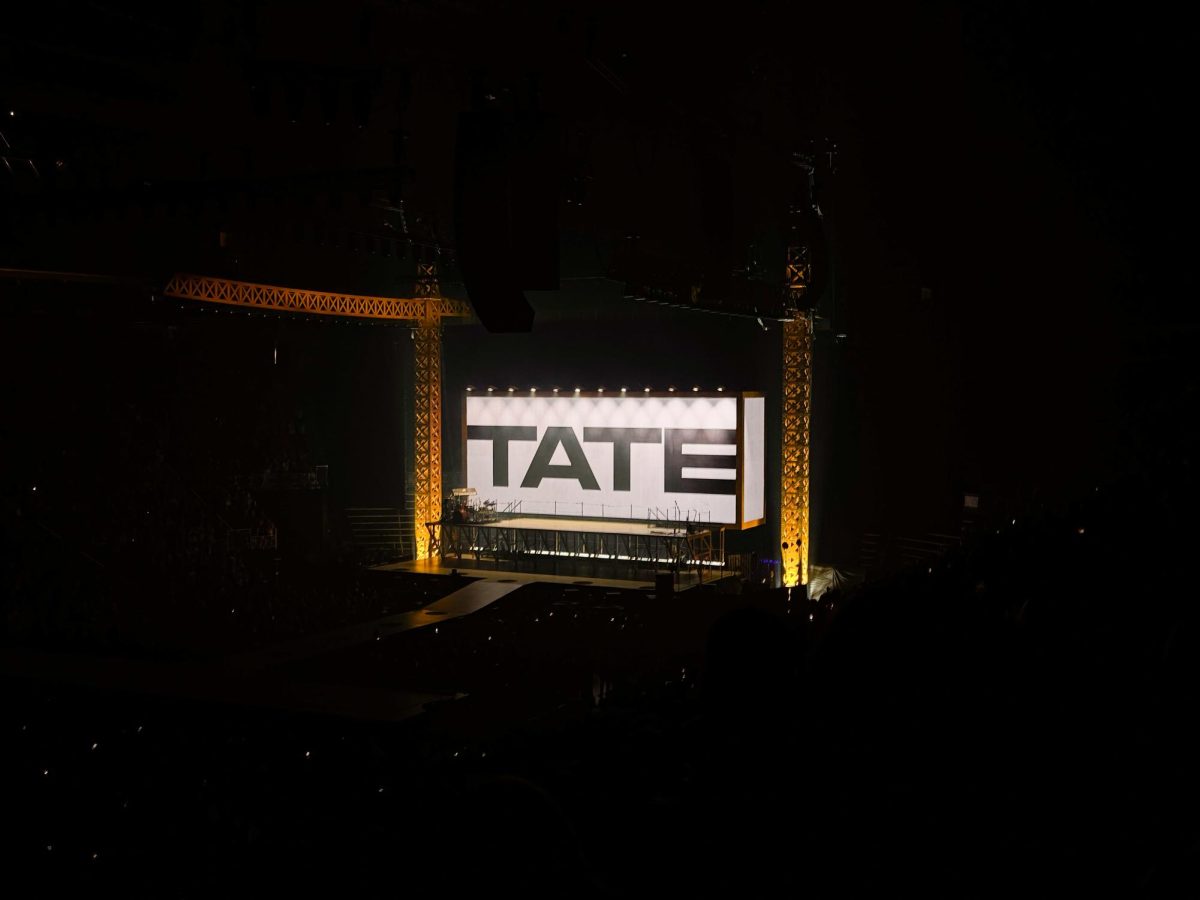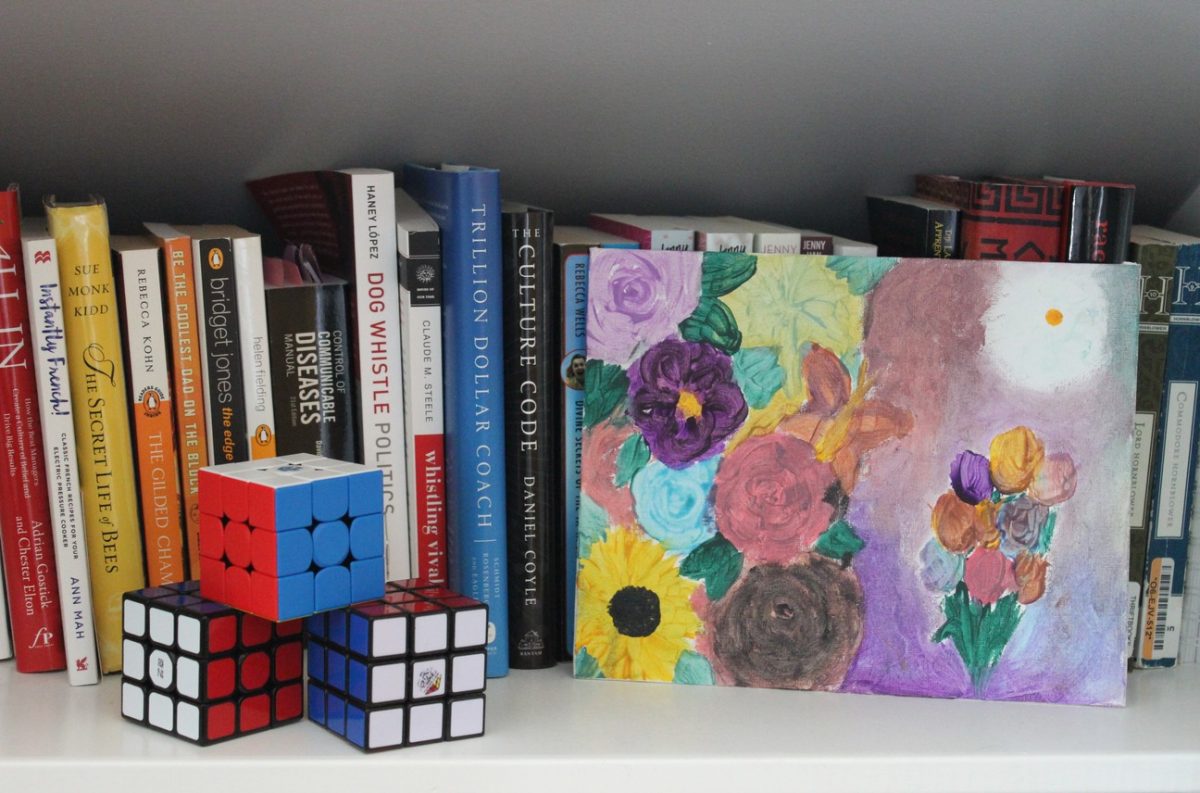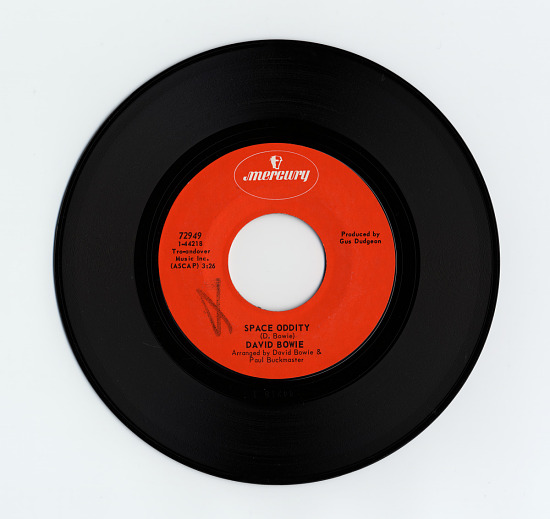As the patrons of Performance Network’s production of The Glass Menagerie filtered into the small theater, it was immediately obvious that something was different about this production. While most theaters hang a heavy black or red curtain over the stage, the curtain for this Tennessee Williams play was made not of velvet, but of light, billowy white lace. The gauzy, ephemeral fabric did little to hide the 1930s apartment behind it from view, but it evoked images of domestic net curtains and gave the unlit set beyond it an eerie, ghostly view, as if the characters were hidden behind a veil.
 Written in 1944, The Glass Menagerie is narrated by Tom Wingfield (Kevin Young), who recounts memories of his family to the sound of a mournful violin, played by local musician Emily Slomovits. Other major characters include Laura Wingfield, Tom’s painfully shy sister; Amanda Wingfield, the family’s overbearing and disappointed mother; and Jim O’Connor, the “Gentleman Caller” who visits their house in the second act. Amid the chaos and discontent of the thirties, Amanda struggles to make her family rise in the world through business, marriage, or any means necessary, despite the wishes of her children.
Written in 1944, The Glass Menagerie is narrated by Tom Wingfield (Kevin Young), who recounts memories of his family to the sound of a mournful violin, played by local musician Emily Slomovits. Other major characters include Laura Wingfield, Tom’s painfully shy sister; Amanda Wingfield, the family’s overbearing and disappointed mother; and Jim O’Connor, the “Gentleman Caller” who visits their house in the second act. Amid the chaos and discontent of the thirties, Amanda struggles to make her family rise in the world through business, marriage, or any means necessary, despite the wishes of her children.
The play made excellent use of lights, with projections setting the tone of many of the scenes. William’s script calls for several images to be projected onto the set throughout the course of the play: a photograph of the Wingfield’s missing patriarch, an image of the gentleman callers that Amanda expects her daughter to be receiving, and, when Tom stumbles into Laura’s eponymous glass animal collection, a slow-motion clip of shattering glass accompanied by a change in lights that almost seems to stop time. The violin also was also an excellent tool for reflecting the mood of the play. Tom regularly broke the fourth wall to direct the violinist, changing the tune with a snap of his fingers to a piece that better fit his emotional state.
The lights and the actors were also very in sync: when Amanda mimed opening the curtains in the morning, she was accompanied by a flood of yellow light, and when Tom talked about the battle of Guernica, his gestures were accompanied by little puffs of purple light.
Interestingly, director Tim Rhoze made the decision to perform the play largely without props. Several set dressings, like the furniture and a large record player, were evident, and a few small props like matches and paper were used, but the actors mimed eating without dishes, and the titular glass menagerie was nowhere to be seen. Laura mimed polishing the tiny, nonexistant figurines, and projections of shattering glass or a glass unicorn were the only images of the menagerie until the end, when Laura retrieves the broken unicorn figurine from beneath the table.
As far as acting went, the driving force of the play was Carla Milarch’s performance as Amanda. Milarch shone in the role of a single mother and former Southern belle with high hopes for her unwilling children. Her cheerful, accented chatter seemed effortless and natural, and when she did break down with emotion, the resulting absence of sound was all the more meaningful.
Although Young sometimes seemed to be overacting when he was acting alongside Laura or performing soliloquies, his dynamic with Milarch was incredibly powerful. The two slung dialogue back and forth at each other in vicious verbal battles, each of which ended in shouting, and then a tangibly painful silence, absent of even the sound of the violin.
By contrast, Emily Caffery in the role of Laura was a little more stiff and emotionless, but that was more representative of Laura’s crippling shyness than the actress’s ability. And when Amanda forces Laura and Jim (Sebastian Gerner) to awkwardly flirt in a shameless bid to marry her daughter off, Caffery’s acting skill is evident. She expertly portrays Laura slowly emerging from her shell without making the transition seem out of place or surprising. Caffery and Gerner acted well alongside each other, with Jim’s outgoing, dominant personality complementing Laura’s more introverted one.
All in all, the Performance Network pulled off an excellent production of Williams’s popular memory play. The set was inspired, the music was beautiful, the lights were well timed, and most of all, the acting was excellent. Although the decision not to include props was odd and potentially jarring, it worked in context: by allowing the audience to add their own mental images to the play, Rhoze and the design team at Performance Network have created a play that will not soon be forgotten.
The Glass Menagerie will be showing at Performance Network Theater Sept. 27 to Oct. 28
Image taken from performancenetwork.org









